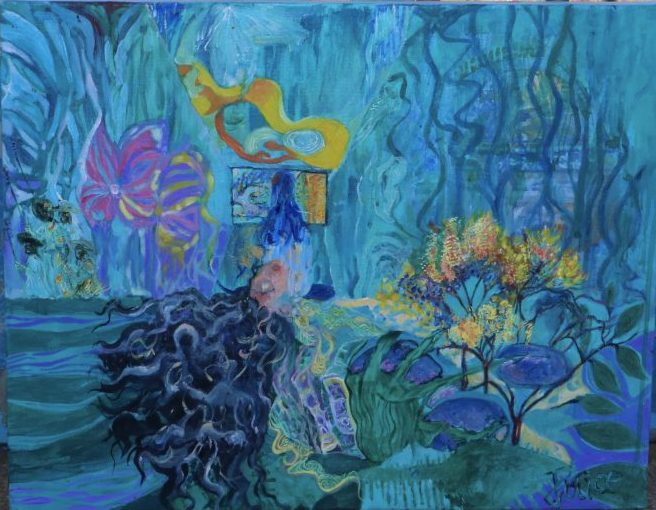VR8–Whimsies Attic






Sorry for my less documentation of collaborating with the group!!! I must keep things updated! Sorry for being slow:(. Owing to my job was doing foleys, I solo -ly made a list of realistic sounds, which I guessed would be appropriate.(As below) The collective foley session was being loaded after the second crit. As we finally got a sound script and we kindly knew what we need to produce! We experimented on different materials like metals, plastics and woods and electrics. And Ben had the big brain of what mechanical sounds would sound like in games! (I don’t play games often) I edited and chopped, removed the background noise on sounds afterwards and sent to the google drive…

The visual of the project has been developed fantastically. It is sad we only has one visual people onsite and being responsible for the theme.


I recorded some samples on piano with condensed microphones in the foley room.
Decolonising Games and VR
It being understood that while, in concreto, we can certainly attach to these truths the corresponding objects in experience, we nevertheless develop such truths purely in abstraao, and thereby vault up into
the boundless, so far as the limits of reason permit.
The metaphysic of morals is concerned especially with the use of the freedom of the
human will, according to rules of law.
a. Freedom of the will as such is the accountability
b. Independent of all experience
c. Actually observed and brought about in consequence
d. Founded on reality; for since reason
enjoins it unconditionally, it must be possible in itself
Sonic Agency sets out to engage the contemporary conditions of social and political crisis by way of sonic thought and imagination. Through the positing of what the author terms “sonic agency,” sound and listening are brought forward as capacities by which gestures of speaking out and coming together are extended.
“Salomé Voegelin terms a “sonic sensibility,” which she theorizes in order to craft
from the heard and the unheard a range of critical ideas and perspectives. In
particular, she draws out a consideration of “sound’s invisible formlessness,” and its
capacity to upset and reorient the politics of visibility.
i Sound and listening are subsequently put forward as a dynamic framework from
which to interrogate “the surface of a visual world.”
What should be at an ontologically “inferior” level suddenly appears one level up (characters from a simulated world suddenly appear in the world generating the simulation); or what should be at
an ontologically “superior” level appears one level down (authors interact with their characters).
I kind of expanded Escher’s image before, so I know he exemplified the paradoxical spaces of this strange loop. And it was very hard to expand it from triangle to rectangular.

Designers were claimed to have the responsibility to reflect on their own standpoint on this issue, and to reflect on the moral aspects of the way in which behavioral options and the consequences of actions are structured and represented in VR applications. This has been argued to be especially important in VR systems used in education, training and therapy, and applications for use by children and adolescents.
“Augmented reality (AR)” is increasingly used as a digital storytelling medium to reveal placebased content, including hidden histories and alternative narratives. In the context of Indigenous–settler relations, AR holds potential to expose and challenge representations of settler colonialism while invoking relational ethics and Indigenous ways of knowing. However, it also threatens to disseminate misinformation and commodify Indigenous Knowledge.
The difference between VR and AR
- VR requires headsets; AR experiences don’t necessarily need them.
- VR creates environments; AR modifies the real-world.
- VR doesn’t require as much bandwidth as AR to operate.
- AR enhances real and virtual worlds; VR can only replace them with a fictional reality.
Sound perspective
- Context and Environment:
- VR: In VR, users are fully immersed in a virtual environment, often with limited or no connection to the physical world. Sound design in VR focuses on creating a convincing and immersive audio environment that complements the virtual visuals and enhances the sense of presence within the virtual world.
- AR: In AR, virtual elements are overlaid onto the real-world environment. Sound design in AR needs to consider the blending of virtual sounds with real-world sounds, ensuring that the augmented audio objects harmoniously interact with the user’s physical surroundings. The challenge lies in maintaining a seamless integration between the two realms.
- Spatial Audio:
- VR: Spatial audio is crucial in VR to provide accurate and realistic sound localization. By utilizing techniques such as binaural audio or ambisonics, VR sound design can accurately represent sound sources and their positions in the virtual space. This helps create a sense of depth, distance, and three-dimensionality, enhancing the immersive experience.
- AR: Spatial audio in AR serves a different purpose. It can be used to provide audio cues and contextually relevant sounds for virtual objects or interactions within the user’s physical environment. The challenge lies in integrating the spatial audio with the user’s real-world perception, ensuring that the virtual sounds blend naturally with the existing acoustic environment.
- User Interaction and Feedback:
- VR: Sound design in VR can focus on providing feedback through audio cues, such as confirming actions, indicating proximity or collision, or guiding the user’s attention within the virtual space.
- AR: Audio cues in AR should be contextually relevant, non-intrusive, and seamlessly integrated into the user’s physical environment.
- Narrative and Storytelling:
- VR: Sound design in VR can be more focused on creating a cinematic or narrative-driven audio experience, incorporating music, dialogues, and sound effects to enhance the storytelling and emotional impact within the virtual world.
- AR: Sound design in AR can be more context-specific, responding dynamically to the user’s actions or the real-world context, and adapting the audio elements accordingly.
